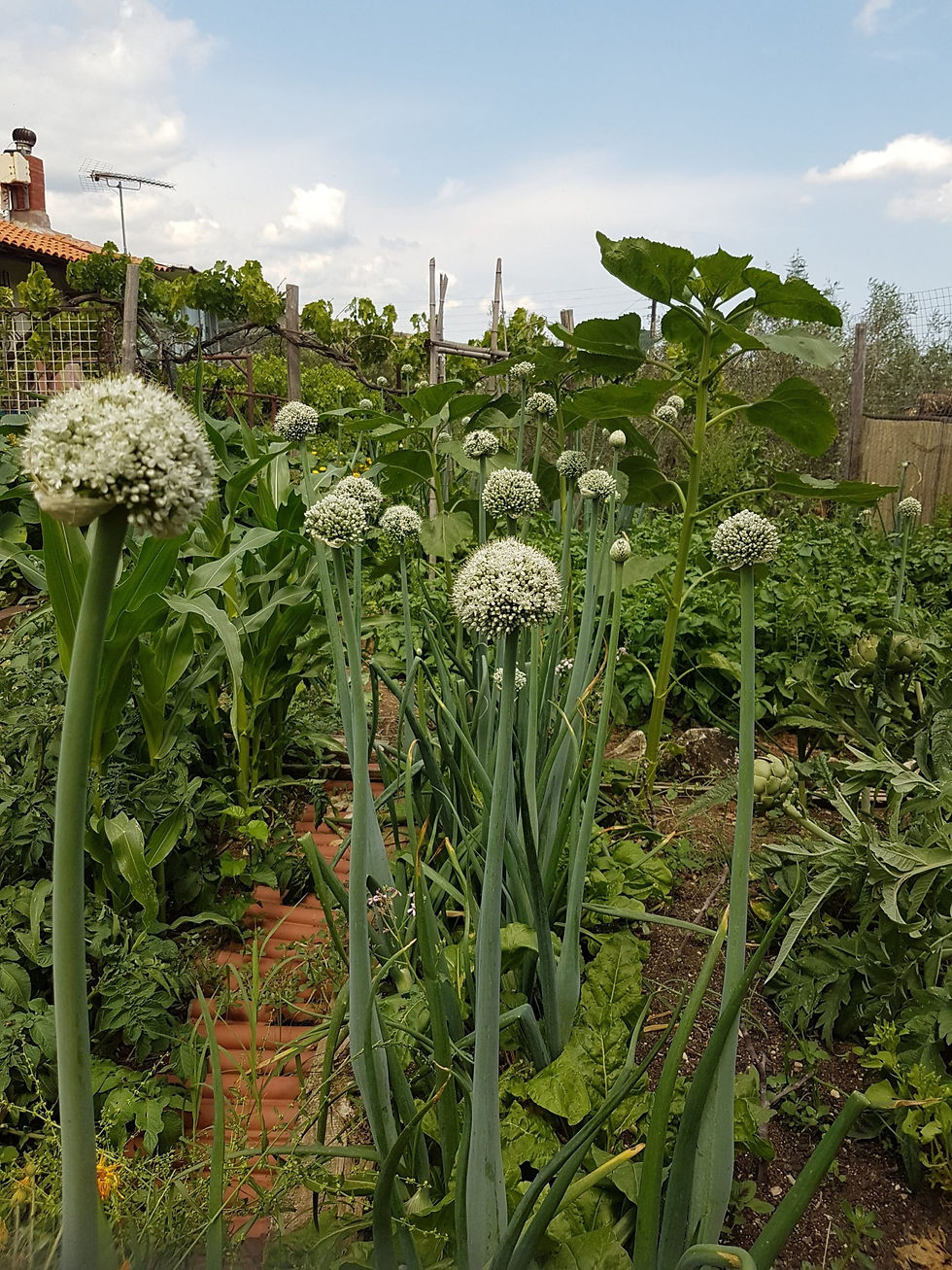Choosing the right seeds
- Samaras Caldewey
- 3. Mai 2020
- 3 Min. Lesezeit
Even if you do not share my passion for purchasing seeds (it gets me truly excited and enthusiastic and I keep proudly showing new seeds to anyone who is interested or not): When planting anything from seed, really, choose wisely. Or experiment!
I will ignore my preferred method in this post: saving your own seeds. Because well, you need to get some first to start with. And the topic of seed saving deserves a separate dedicated post…

Our toddler’s first attempt at ‘saving her own seeds’
Seed exchange
From my point of you, exchanging seeds (or being gifted with them) is the best option, by far. That is if it is seeds that aren’t hybrids (more on that below) and that were collected in a climate that is similar to yours.
It’s a way to support diversity, receive seeds that are already adapted to the local weather (and potentially soil) and tend to be more disease resistant.
A lot of our initial seeds were sourced from a local sharing-circle which is hosting big seed-festivals (see https://peliti.gr/20th-peliti-seed-festival-4rd-olympic-seed-festival-2020/ for more info). Many, most of them were germinating very well, gave us good crops and new seeds.
Purchased seeds
Purchasing seeds not only gives you good or bad seeds, but you are also voting with your money. We can choose whether to support Monsanto and Co. or whether we want to support companies and initiatives that are working hard to save and protect heirloom varieties and to maintain diversity by
offering a very broad range of varieties AND
by enabling growers to save their own seeds. Which, thanks to crossing, will result in even more, new varieties and well-adopted plants
For an overview of the differences between heirloom seeds and hybrid seeds, read this article on The Spruce: https://schrotundkorn.de/ernaehrung/lesen/sk0202e4.html
Seeds that come from giant corporations are usually all hybrid seeds. This means they are ‘not true to type’ and cannot multiply themselves. Saving seeds and replanting from any hybrid fruit might give you a plant that is not producing any fruit at all. Or you end up with something very different. As a result, you have to buy new seeds every year. It’s needless to point out who’s benefiting from that. But other than economic concerns (and in my opinion much more important), it prevents species conservation and biodiversity.

Using heirloom seeds does not been being limited to boring varieties – ‘Gelbes Ochsenherz’ from Arche Noah
So if you purchase seeds, are concerned about biodiversity, conservation, becoming seed-self-sufficient: look for heirloom seeds. There’s tons of providers and Ecosia (or Google) is your best friend so I am not going to list all. Below is only the ones that we purchased from and have been very happy with.
Baker Creek Heirloom Seeds: www.rareseeds.com
Restoration Seeds: www.restorationseeds.com
Bingenheimer Saatgut: www.bingenheimer-saatgut.de
Arche Noah: www.arche-noah.at
Samenfest: www.samenfest.de
Also checkout Dawanda, your local farmers market etc.!

As a side note – focus on acquiring good seeds rather than fancy pots and equipment!!
Experiment
Start with collecting what you find (literally) on the street: overripe plums or cherries that are lying around on a pedestrian walk are obvious ones.
And then, there’s another obvious one: your grocery store! Again, most of the produce there is from hybrid plants. It’s still a fun experiment though and a lot of times I got lucky! The next generation of your yellow courgette might be dark green. The radishes you grow from a very mild variety can be mighty spicy, and so on. If you have space though and have the capacity for surprises, it is a very inexpensive way of sourcing seeds.

All of these beauties were originally sourced from farmers market produce!
To increase the chances for success, it is advisable to choose:
Organic produce
mature produce and also overripe produce will usually have more developed seeds
locally grown (outside if possible) because of similar climate conditions
only save from yummy things
And whenever you can’t find a seed within/or outside of the produce, inform your self how the multiply. Carrots, onions, beets and radishes for example. Because they are ‘biennials’. For carrots simply cut the top off about two centimetres down from the little leaf growing spot, remove all leaves other than one or two tiny ones, plant it. With a bit of moisture, it grows into a big plant and makes thousands of seeds coming summer.
We also had luck with items from the bulk bins (dried beans, grains, sunflower seeds, mustard seeds etc.).

Great sources for seeds! Multiplied well and almost invasive by now…
So no excuse really! Start sourcing seeds and get planting 😉

And one last try to convince you: if you let your onions or leeks go to flower you are blessed with beautiful flowers 🙂







Kommentare